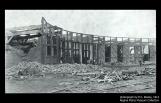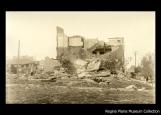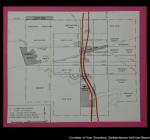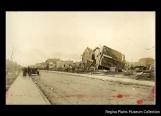1
The Path of the Tornado3
Tornadoes evoke some of the strongest images ever imaginable in our minds. It is common knowledge that a tornado observed and not moving to the right or to the left relative to trees or power poles in the distance may be moving in the direction of the observer.On June 30th, 1912 around 5:00pm, some Regina residents saw the tornado moving - others found out about it when it was upon them.
5
Credible historical accounts of the tornado are few and far between, although there are many photographs depicting its aftermath.Some have argued that a couple of funnel clouds came together southeast of Regina on that fateful day. Most agree that it then started heading northward toward the city. It is likely we will never know with certainty how this catastrophic event took shape.
6
Chart showing the frequency of tornado severity based on the Fujita scale.30 March 2006
Regina, Saskatchewan

7
What we know with a reasonable amount of confidence is that the tornado rated as an F4 on the Fujita scale, with winds between 330 and 416 kilometers per hour. With this velocity, well-constructed houses can be leveled; structures with weak foundations can be blown off some distance; cars can be thrown and large missiles or debris can be generated.The 1912 Regina tornado was the most severe tornado so far known in Canada. It killed 28 people, injured hundreds and demolished much of the downtown area, leaving 2,400 people homeless.
8
Ruins of the first Regina Boat Club House on the north shore of Wascana Lake, completed in 1906.1912
Wascana Park, Regina, Saskatchewan
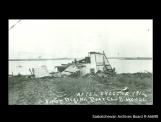
9
Along the tornado's path, the brand new Legislative building stood to the west. The tornado blew the windows out of the east wing before it swooped over Wascana lake. This is where its trajectory somewhat stabilizes, as if to take better aim and wreak havok where it would hurt most.While over the lake, the tornado had veered slightly toward the west, wedging itself in pretty much a steady groove northward along Smith and Lorne streets, heading for the more densely built environment of the downtown area.
Bear in mind that the tornado hit on a hot long weekend Sunday afternoon. It was a day off. People had likely been relaxing at the lake. There are indeed reports of boaters witnessing the tornado moving over water to the north shore. Within seconds, the force of the wind crushed the Regina Boating Club facility.
10
Wreckage along Lorne Street, one of the areas most affected by the 1912 tornado.1912
Lorne Street, Regina, Saskatchewan
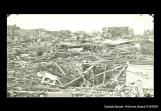
11
The tornado crept its way along Lorne and Smith streets, tearing house after house. Simply put, much of the damage was caused by building materials lifted by the winds. Entire house floors were literally torn off the ground and in some cases, moved across the street.13
In his book "Regina's Terrible Tornado", Frank W. Anderson writes:"Probably no one will ever know how long the reign of terror hung over the prairie oasis of Regina. Some estimates say it was all over in 30 seconds. More probably, the raging twister took as long as four or even five minutes to traverse the city. Preceded by a very light rain, the main body of the storm was followed by a deluge of water - some of it sucked up from Wascana and dumped upon the nearest buildings, as if from a giant pail. With the cessation of the torrential downpour, people began to crawl from the ruins of their homes, or to venture from the safety of buildings untouched by the tornado, and to form rescue parties."
Even if Anderson's account is somewhat fictionalized, it does provide a vivid interpretation of events, as they might have unfolded. It remains unparalleled in the impressions it leaves readers with to this day:
"There was one solid block of residences between Lorne and Smith Streets and bounded by 13th and 14th Avenues which was leveled. Caught squarely in the heart of the tornado, many of them were battered down by the rotary force of the winds. Others literally blew themselves up as the low-pressure area of the tornado passed over them, The [sic] air remaining inside the house created an outward pressure and when the core of the storm reached them, creating almost a vacuum, this inside pressure burst the wall, thrust up the ceiling and shredded doors and windows."
Most of the death recorded as a result of the tornado occured within a zone situated between 15th Avenue and South Railway, along a south to north axis.
14
E.C. Rossie photograph of the remains of the Canadian Pacific Railway Roundhouse in central Regina.1912
Regina, Saskatchewan
